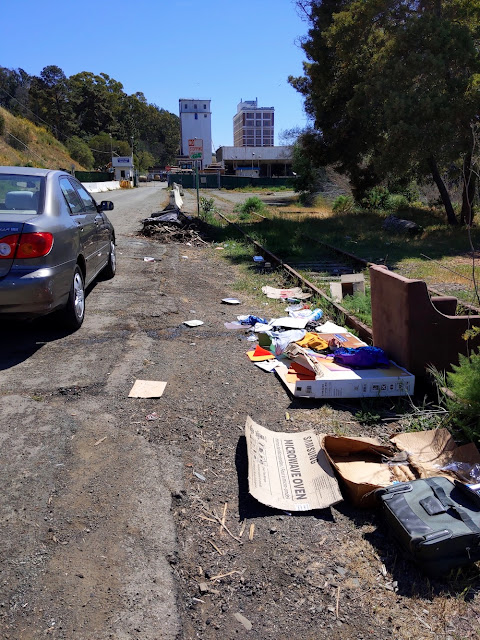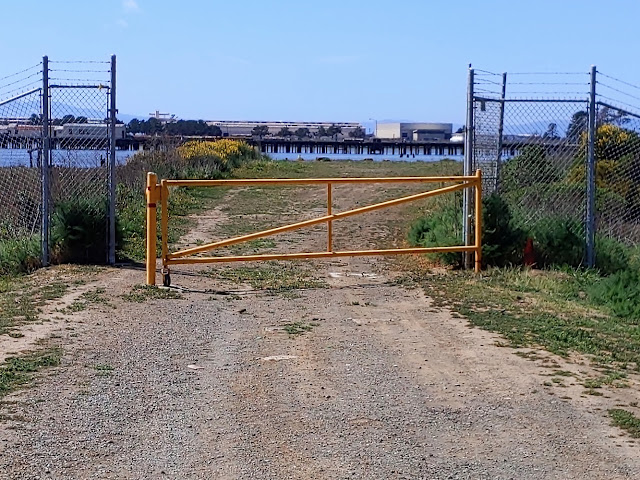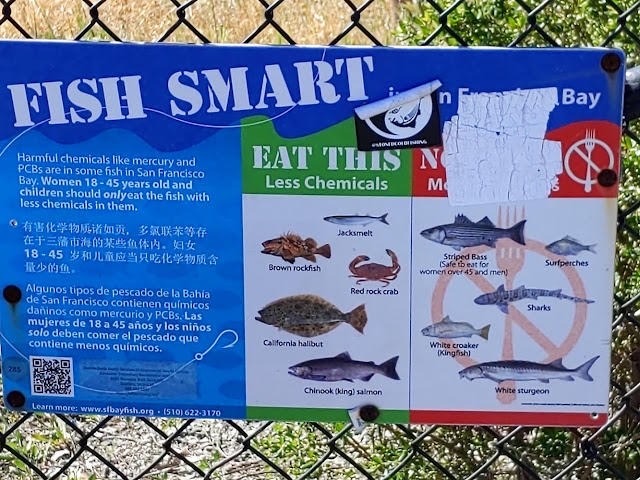
Garbage along an unmaintained road and abandoned tracks in South Vallejo, CA. A shuttered flour mill is seen in the background. Photo: Zsea Bowmani
Last week, the EJ Advocacy Lab headed to East Bay as part of our work on CA civil rights law §11135. As we bear witness to the outcomes of disinvestment, neglect, and prioritization of heavy industries, we continue to work in solidarity with our community partners to achieve true environmental justice for residents in South Vallejo and Rodeo. The following reflection is from Max Jones, research assistant and 2L at Santa Clara University Law School.
On Friday, March 25th, Professor Bowmani and I traveled to Vallejo, California to gain a more intimate experience with the consequences of environmental injustice. The committed and confident leader of All Positives Possible (APP), LaDonna Williams, and the incredibly passionate Ms. Pat, a long-time resident, took us on a tour of the systemic issues that hurt their beloved Vallejo and the nearby community of Rodeo.
We saw the public land that had been poorly kept. It had been relegated to the dustbin of local government management. Trash littered the area as if it was a forgotten land. Perhaps most insulting, the fenced off entrance permitted entrance through an awkwardly installed yellow bar. The locked position of the obtrusive metal entranceway is at such an angle to forbid the access of the physically disabled.

Yellow fence erected by City of Vallejo to limit access to fishing spot in South Vallejo. Photo: Zsea Bowmani
Ms. Pat, who has lived in Vallejo her entire life, reflected on how little critical thinking must have been involved in the installation of the gate. Vallejo is already a food desert. Now, the poor residents who depend on fishing to sustain themselves have another hurdle to overcome in feeding themselves. Further, and perhaps most disturbing, the disabled and poor are the ones most at risk in the community. They are no longer able to access this historical spot.
Personally, I was deeply disturbed by what we saw. Rodeo, California is a town defined by the oil refinery industry. The hamlet of a community is surrounded by a refinery complex, a sewage treatment plant, and a long tract of railroad. Fences define the character of the community. Chain-link fences divided residents from the refinery and their land. Walls stop people from entering the waterfront area surrounding the sewage treatment facility. Further, and perhaps most tragic, fences were erected surrounding the local preschool’s playground to prevent people from the nearby homeless encampment from interacting with the toddlers. A person’s movement is predetermined by barriers. This is a town defined by environmental injustice. Merely ten miles away is the beautiful and well-maintained town of Crockett. Its majestic houses overlooking the water are a stark contrast from the fences that define the nearby town of Rodeo.

Warning sign near fishing area in Rodeo advising women and children to eat fish with “less chemicals in them.” Photo: Zsea Bowmani
While forms of environmental injustice exist all around us, the concentration of poor policy, management, and corruption has made the Vallejo area a difficult one to live in. It is difficult to ignore the fact that Vallejo is the most diverse city in California. While uncomfortable, it is necessary in our communal pursuit towards justice to recognize that the white majority areas nearby have not suffered the same fate. This is not a fact that should be ignored.